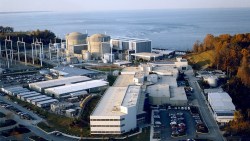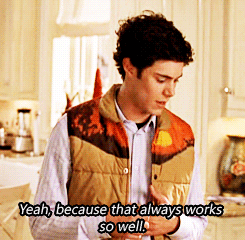
NRCEDF is selling its stake in Calvert Cliffs Nuclear Power Plant in Maryland.
The world’s largest operator of nuclear power plants is dumping its stake in American reactors, turning its focus instead to wind and solar power.
French utility company EDF announced this week that it will sell its stake in Constellation Energy Nuclear Group (CENG), which operates five nuclear reactors in New York and Maryland.
EDF cited cheap power produced by fracked natural gas as the big reason why it’s abandoning its American nuclear facilities. But the company said it will now focus its American business strategy not on fossil fuels but on renewable energy. From Reuters:
“Circumstances for the development of nuclear in the U.S. are not favorable at the moment,” [EDF Chief Executive Henri] Proglio said.
International Energy Agency analyst Dennis Volk said CENG’s eastern U.S. power plants were located in some of the most competitive power markets in the country, with high price competition, growing wind capacity and cheap gas.
“It is simply not easy to invest in nuclear and recover your money there,” Volk said.
Proglio said EDF would now focus on renewable energy in the United States. EDF employs 860 people in U.S. solar and wind, and since 2010 its generating capacity has doubled to 2.3 gigawatts. It manages another 7 gigawatts for other companies.
The French utility’s pullout comes as nuclear power plants shutter in California, Florida, and Wisconsin. The price of operating nuclear power plants has risen as the plants have grown older. Hopes of nuclear power being “too cheap to meter” were long ago dashed.
Mark Cooper, a senior fellow at the Vermont Law School’s Institute for Energy and the Environment, recently published a 40-page obituary [PDF] for the nuclear industry. From an article published a couple of weeks ago in The Plain Dealer:
Cooper, who thinks nuclear energy’s cost overruns and frequent shutdowns have always made it more expensive than it appears, recommends that the industry develop an orderly closing plan over the next few years, avoiding the rate chaos that unplanned closings might create.
“In 2013, more (nuclear) capacity retired early than in any year of the U.S. commercial nuclear sector,” he said in a press briefing. “In recent months, four reactors have been closed in early retirement, five major up-rates (increases in generating capacity) were cancelled.
“The bottom line is that the tough times the nuclear power industry faces today are only going to get tougher. Over three dozen reactors in almost two dozen states are at risk of early retirement. And a dozen face the greatest risk of being shut down,” he said.
Still, we won’t be rid of nuclear energy any time soon. About 100 reactors are still operating around the country, and two more are being built at an existing plant is in Georgia.
And even closing down retired nuclear power plants is a long and costly affair. The shutdown and cleanup at the Kewaunee plant in Wisconsin could cost $1 billion and take more than 50 years.




